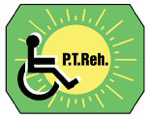


|
Current issue
Archive
Manuscripts accepted
About the journal
Editorial board
Reviewers
Abstracting and indexing
Contact
Instructions for authors
Publication charge
Ethical standards and procedures
Editorial System
Submit your Manuscript
|
1/2020
vol. 34 abstract:
Original paper
Evaluation of measurement methods in determining muscle strength of down syndrome and typically developing individual
Gonca Ince
1
,
Sema Polat
2
,
Ahmet Hilmi Yucel
2
Advances in Rehabilitation, 2020, 34(1), 1–12
Online publish date: 2020/03/10
View
full text
Get citation
ENW EndNote
BIB JabRef, Mendeley
RIS Papers, Reference Manager, RefWorks, Zotero
AMA
APA
Chicago
Harvard
MLA
Vancouver
Introduction
The muscle strength problems of Individuals with Down Syndrome (IDS) originate from both congenital hypotonus and joint hypermobility. This affects daily life activities adversely. In medicine, muscle strength measurements are usually performed with Nicholas Manual Muscle Test (NMMT) or with the Manual Muscle Test (MMT) by physiotherapists, whereas, in other fields, scientists have difficulty to find suitable tests for measurement of muscle strength. The aim of this study is to investigate whether alternative tests can be used to assess muscle strength in IDS instead of medical tests. Material and methods In the city of Adana of Turkey, 30 IDS from various Special Education and Rehabilitation Centers and 85 Typically Developing Individuals (TDI) from various secondary schools participated in the study voluntarily. Lower extremity strength was evaluated with NMMT, Leg Dynamometer Test (LDT), MMT and 30-second Chair Stand Test (30s-CST). The Mann Whitney U Test and Spearman’s Rank Correlation were used in statistical analysis. Results By using different methods, it was determined that the lower extremity strength assessment measurements correlated positively with each other. Especially, the 30s-CST correlated with the ratio of 0.62 with LDT, while the LDT correlated with the gluteus maximus Manual Muscle Test (right-left) ratio of 0.66–0.64, respectively. Conclusion As a remarkable result, low muscle strength was not measured with NMMT. For this reason, we can emphasize that the muscle development measurements of IDS with low muscle strength should be made by using 30s-CST or LDT with NMMT together. keywords:
sport, strength, 30s-CST, Manual Muscle Test, Down Syndrome |
    |